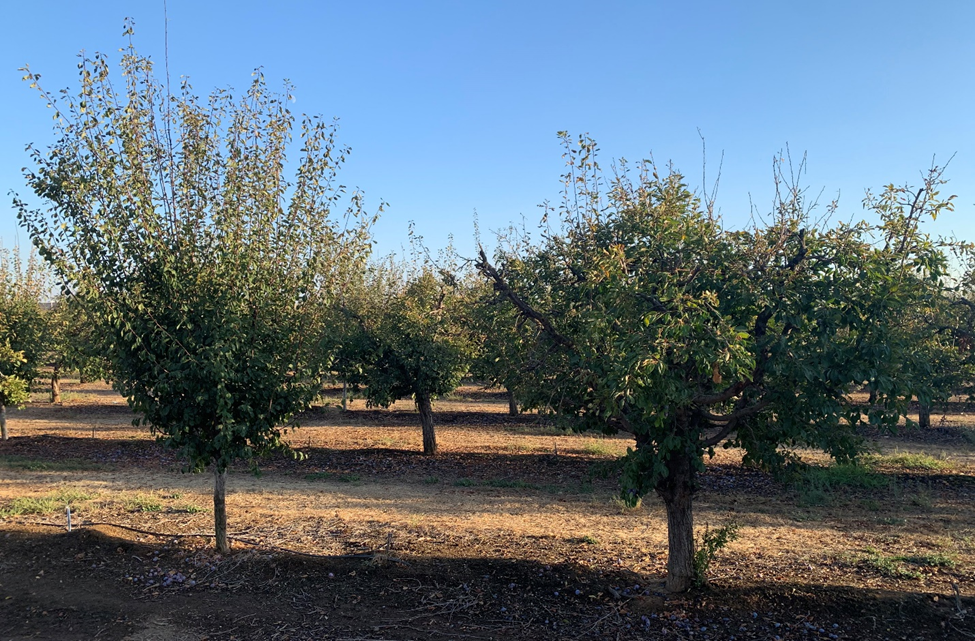Franz Niederholzer, UCCE Orchards Systems Advisor, Colusa, Sutter, and Yuba Counties
Luke Milliron, UCCE Orchards Systems Advisor, Butte, Glenn, and Tehama Counties
Good orchard (or life) health rule number 1 is start early. That’s because developing an orchard is a lot like developing a successful community of individual people. Maintaining good health means starting early and keeping regular practices to prevent chronic diseases and deliver healthy and productive trees or people. There is a catch, early pay-in is needed to deliver longer lasting health (and payout). We do this all the time – retirement investment, Social Security pay in, unemployment insurance, preventative doctor and dentist visits, etc. This same long-term thinking is needed to control chronic diseases in prune orchards.
Chronic diseases are the leading killers of Americans and prune orchards. Practices that promote these diseases start early in life – with often unnoticed impacts until later in life. Chronic diseases of humans (heart disease, cancer, diabetes, etc.) are the leading cause of death and disability in the United States. Chronic diseases of prune orchards (Cytospora canker, Bot canker, Phellinus wood rot, etc.) often infect trees early in the life of the orchard, slowly killing scaffolds, then whole trees. Eventually the orchard is no longer profitable, years sooner than it would be without chronic disease. Cytopsora is the pathogen most often isolated from cankers in prune orchards. A great deal is known about this pathogen and its disease cycle.
Cytospora spores develop in existing cankers, are released with rain, and moved by wind. The longer the time between rainstorms and the more rain that falls in a storm, the higher the risk of infection as more spores are found in the orchard under these conditions.
Cytospora spores infect prune trees through existing openings, including damaged bark (sunburn, shaker damage, etc.) or pruning wounds. Once a tree is infected, Cytospora (and other bark cankers) can only be removed by cutting out the damaged wood. Cankers left in the wood stay active in the tree — a chronic disease. The more stressed an infected tree, the faster the disease will spread. Water stress, nutrient stress, heat stress – all these will increase the activity of chronic cankers, especially Cytospora, in prune trees.
Certain fungicides sprayed on fresh pruning wounds ahead of rain significantly reduce Cytospora infection in prune trees. Thiophanate-methyl (Topsin®-M, etc.) was the most consistently effective fungicide tested against Cytospora infections of pruning wounds in ‘French’ prune during years of testing by UC researchers funded by the CA Prune Board.
For long-term orchard health and productivity, manage chronic diseases by working a protective fungicide spray into your pruning (hand or mechanical) program after cutting and ahead of forecasted rain*. This practice is critical for all orchard ages but is especially important for young orchards with large pruning cuts lower in the canopy or any age orchards where mechanical hedging makes large cuts. Yes, these practices add cost and management steps during pruning. However, with regular use starting the first dormant pruning, this program should maintain orchard health and yield longer than a short-sighted approach that can cut short the productive life of an orchard.
Rain + disease spore + unprotected cut = infection
Rain + disease spore + protected cut ≠ infection
Rain + disease spore + no cut ≠ infection
No rain + disease spore + unprotected cut ≠ infection




Leave a Reply